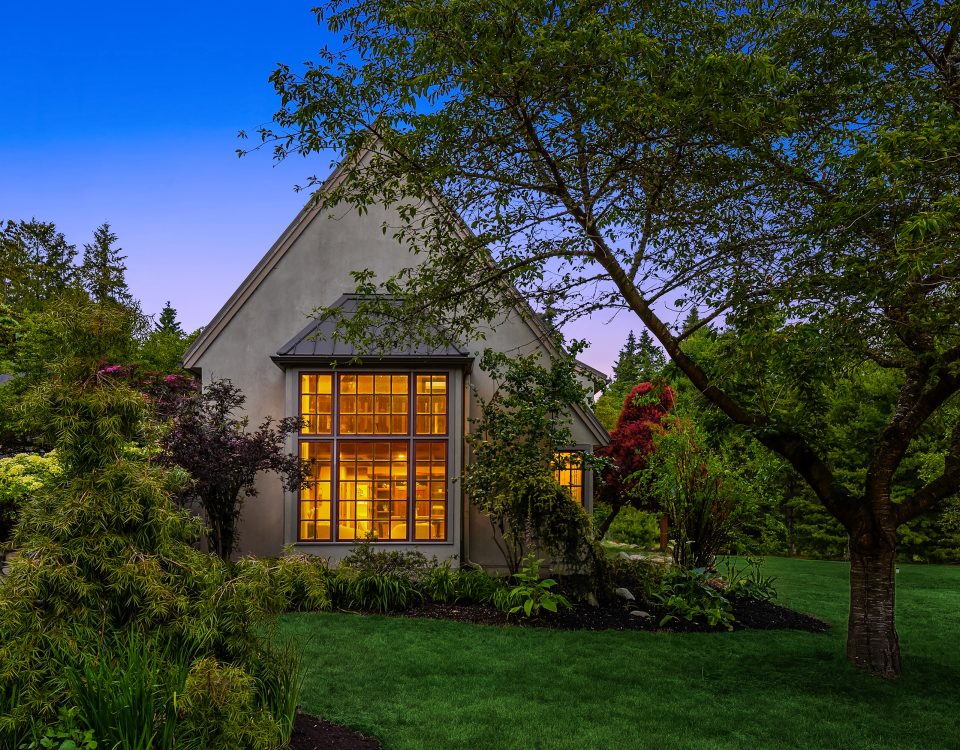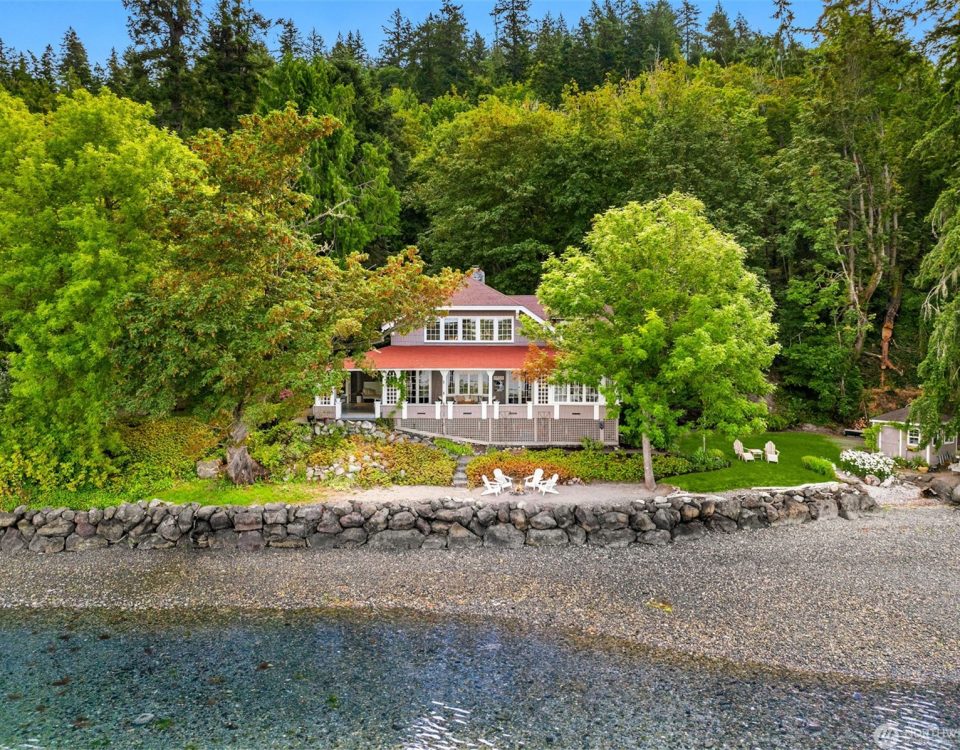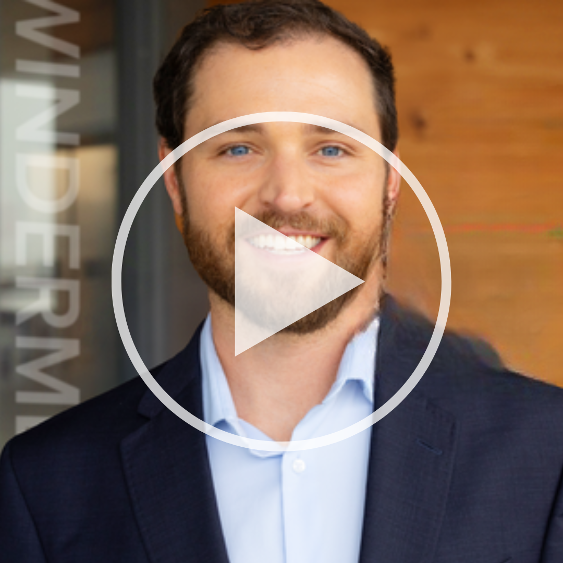Bainbridge Real Estate 2017 2nd Quarter Review

New Listing | 1858 Commodore LN NW on Bainbridge
July 20, 2017
That Fall Feeling
September 14, 2017
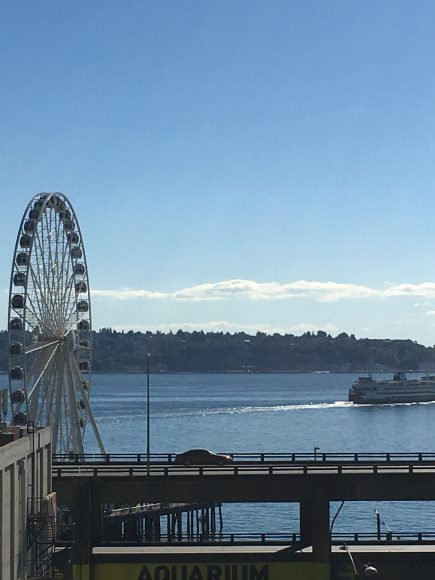 Mid-Way Through a Good Year | A Bustling Springtime
Mid-Way Through a Good Year | A Bustling Springtime
Even though the first quarter of 2017 didn’t start that slowly, it sure felt like it did. But the second quarter was a different story. We were flat-out busy between April and June. Personally, it was my busiest quarter to date. There were 141 home sales on Bainbridge during Q2, which was a 31.8% increase over last year and a 306.5% increase over 2009 (for those of you who remember those days). The only second quarter to get even close in the past decade was 2013, when 125 homes sold.
The Mechanics of Price
Still, a curious piece of data accompanies all those sales: the median price of homes sold in the first half of 2017 increased only 3.6% over the comparable period last year. That is the slowest growth of prices since 2012-2013 (when it actually went down). Here’s why this is significant: even though there is healthy demand, buyers are showing restraint and patience. This, I think is a good thing. The basics of presentation, pricing and negotiating (which really good agents bring to the table) still prevails. You cannot just take a house in any condition, throw a price at it and expect success. This is one of the factors that differentiate Bainbridge from the Seattle market. The flip side is that a major source of new buyers on Bainbridge are frustrated Seattle buyers who are tired of dealing with the city’s growth and market conditions. Our office was involved in 96 Bainbridge transactions during the first six months of this year, 30 of which (or 31.3%) involved Seattle and Eastside buyers. When we expand the circle, we see that out-of-state and Seattle buyers accounted for 51% of our transaction in the first six months.
Goings-on with Condominiums and Land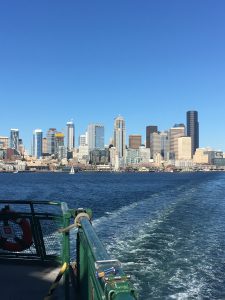
Our condominium marketplace has had a booming first half of the year. Sales climbed from 38 in 2016 to 50 in 2017 (almost a 32% increase) and the median price rose from $404,500 to $499,250 (up 23.4%), finally surpassing 2007’s previous record of $468,000. It took a decade for these numbers to return, and we’re happy to welcome them back.
Land is now the only remaining soft spot in our market. Sales were down 39% from last year but median prices rose 14%. We attribute this mostly to no new large parcel sales and the possibility that people are intimidated by the new construction process. The planning and designing phases of any new project are exciting, but then come permitting, the search for contractors and all the costs. With quite a bit of new construction coming on line, people seem to be waiting to see what someone else has built.
A Construction Zone
There is quite a bit of new construction on Bainbridge, which means the development topic is getting a lot of attention among locals. Bainbridge Island is such a great place to live that the pressure to grow comes naturally. History tells us that restricting growth will push up prices and eventually affect the market’s diversity. However, growth is a concern to existing resi-dents who fear it will spoil what makes the community desirable in the first place. So the community stance has been to try to limit de-velopment to specific pockets of the island as a way of preserving rural character in general. When we map the major new construction projects, we see that this goal has largely been met:
Winslow: Grow Village, Wyatt Way (DA Horton), Weaver, Bainbridge Landing, Finch, Freestone Landmark (Wing Point), Freestone Ferryview (Wing Point)
Lynwood Center: The Roost, Pleasant Beach
Rolling Bay: Sunrise Square
These projects are all within designated growth areas. Indeed, the only multi-home development out of the growth centers is the 10-home project going in at Torvanger/Sunrise Drive, and that’s being built on a 12-acre parcel.
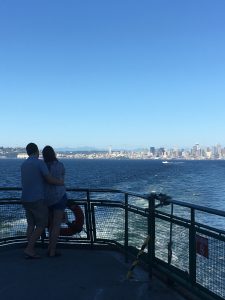 Favorable Conditions
Favorable Conditions
How long will this pressurized market last? Anyone who experienced the 2007 market, which was also quite active just before it changed dramatically, is reluctant to make long-term predictions. However, there are some key differ-ences between 2017 and 2007. Today, the lending and banking environments are far healthier. Also, job growth is the primary fuel of real estate growth. And our local economy is far stronger now than then. Windermere Chief Economist Matthew Gardner had this to say about regional job growth in his Q1 2017 report:
Washington State continues to add jobs at a steady rate. (We) continue to see unemployment fall and I anticipate that we will see this rate drop further as we move through the year. In all, the economy continues to perform at or above average levels and 2017 will be another growth year.
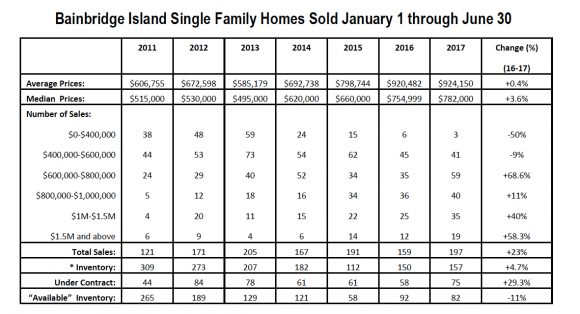
Ever the Rock
Yes we have growth and new construction, but there is diversity in the construction (family homes, homes ideal for downsizers, and homes close to services). When you drive around the island, you find most of it untouched by new developments. We also have the best parks, hikes, beaches, bays and communities in Puget Sound. Our region’s star is still rising as a great place to live and work and we are one of the premier neighborhoods in it. Growth pressure will continue; it’s up to all of us to work together to ad-dress it in ways that honor the past, present and future of this great place.

